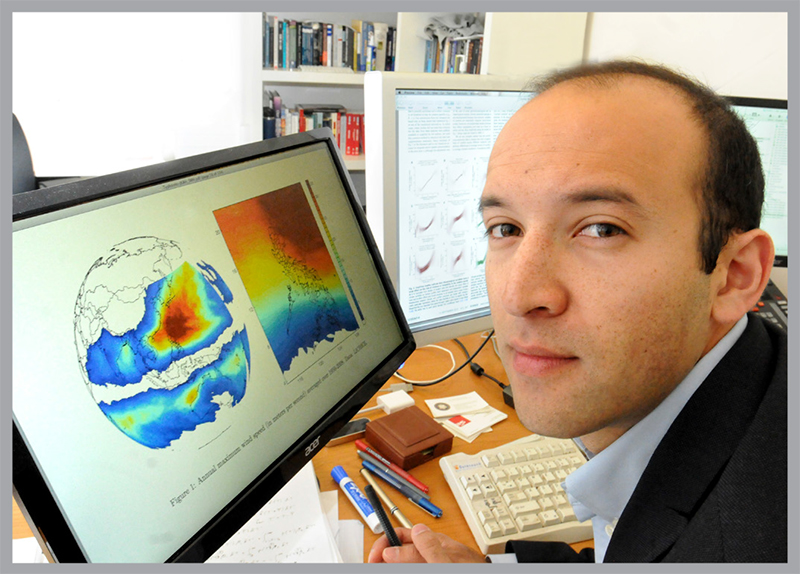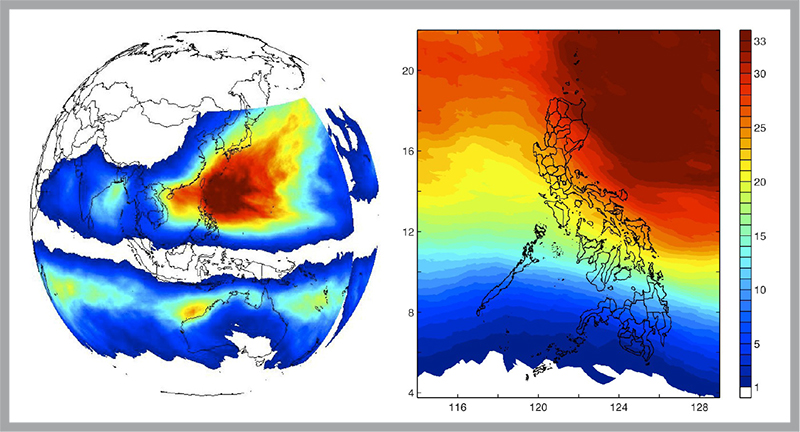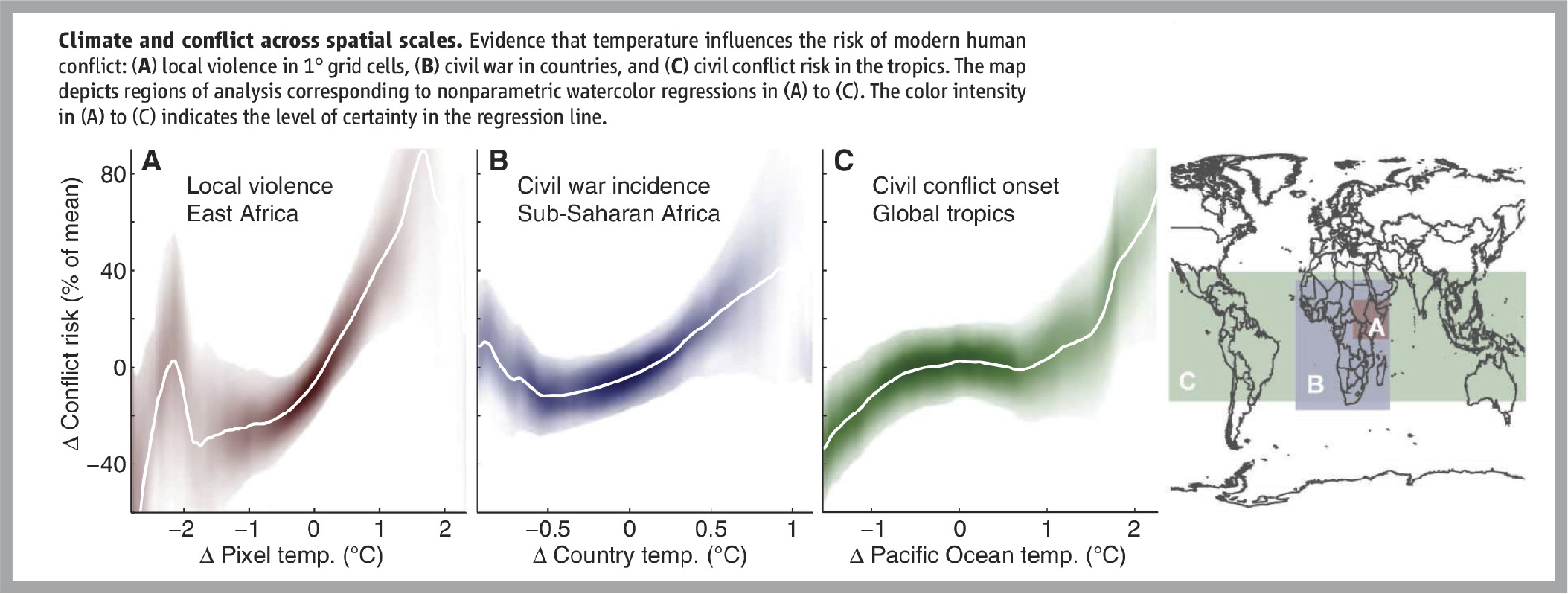Can New Understanding Avert Tragedy?
As a boy growing up in Syracuse, NY, Sol Hsiang ran an experiment for a school project testing whether plants grow better sprinkled with water vs orange juice. Today, 20 years later, he applies complex statistical strategies to examine sobering, large–scale versions of the same basic question: How will environmental change affect life?
Hsiang’s expertise lies in finding the connections between seemingly unrelated sources of data needed to answer disquieting questions: What is the likely impact of climate change on global patterns of conflict — and on family survival?

An economist and assistant professor of public policy at Berkeley, he has published half a dozen widely discussed papers in the past four years, including studies in Science and Nature integrating findings from researchers around the world in both the physical and social sciences.
He intends his studies to provide a “ground–level” view of climate’s current and likely future role in such social stresses as child mortality, crime and social upheaval.
This year, Forbes magazine recognized Hsiang as one of “the brightest stars” under 30 in the field of law and policy. In 2013, his work earned him the inaugural Science for Solutions Award presented by the American Geophysical Union for “significant contributions in the application and use of earth and space sciences to solve societal problems.”
The possibility of climate–induced disruptions, of course, affects governmental and non–governmental planning to avert or cope with worst–case scenarios. Conflict forecasters in the military also watch his research closely. They hope regional conflicts don’t accelerate, but they depend on reliable projections to assess the risk.
One of Hsiang’s most influential papers ties together startlingly disparate studies to quantify the social impact of severe weather on families in the Philippines. The study brings together satellite weather tracking data and such personal findings as Philippines mothers’ views of their family’s health needs.
“As social scientists, we study family health in a particular district over a calendar year, but the hurricane is going to go wherever it goes, and whenever it goes. The trick is finding a way to bring these different types of data together — to find the adaptor to plug one data set into the other,” he says.
The research showed that periodic typhoons that sweep through the Philippines tear up family life much more and for much longer periods than government studies commonly report.
He and fellow–economist Jesse Keith Anttila–Hughes, at the University of San Francisco, showed that while Philippine government statistics showed less than 800 deaths per year from typhoons, true mortality figures are 15 times higher, and mostly from deaths of infant girls.

Most of the infant mortality is what Hsiang calls “economic death” — the result of a dramatic decrease in care that parents are able give during the first year after a devastating storm.
“The infant death rate a year out is a tragic on–the–ground impact, a measure of a different order than reports in the immediate aftermath of the storm,” Hsiang says. “We think it’s the economic decline after the storm that restricts families’ ability meet their children’s needs.”
Data from interviews with mothers also revealed that families ate less expensive, less nutritious foods in the wake of hurricanes. They cut down on doctor’s visits and sent their children to school less often — telling economic indicators and predictors of a family’s well–being.
As research increasingly points to a global temperature rise in coming decades, dozens of forecasts examine the potential impacts on health, agriculture, water supply and migration. But beneath these disruptions lies the possibility of greatly increased localized crime and regional conflict.
Last year, in the journal, Science, Hsiang and two colleagues analyzed what they considered the 60 most rigorous quantitative studies linking past periods of climate change to social upheaval. Their research found that both violent crime and regional conflict rose significantly during periods of temperature shifts like those predicted over the next 40 years.
They documented for the first time a “striking convergence” of the findings that major climate events have significantly increased human conflict across many regions of the world.
“One thing we found from looking at all these studies together that no one had pointed out is that unusually cold epochs and unusually warm periods are both associated with greater conflict. There’s a sweet spot in the middle.”
He hopes his research can help governments focus on that sweet spot.

